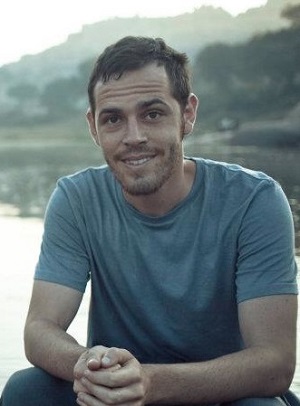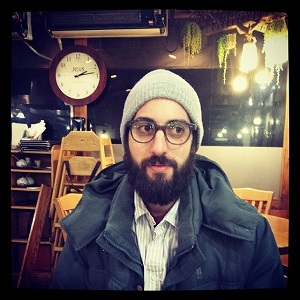Tribeca Interviews: Navigating a Clash of Two Cultures in ‘Tomorrow We Disappear’
GALO: Toward the end of the film, Rahman, the magician, is asked: “If you move from Kathputli, will you still be a magician?” He provides no response. Puran, your grandfather and father built your home at Kathputli and were also puppeteers. How will you adapt to your new home and yet carry on the tradition? And do you think your grandson will carry it on?
Puran Bhatt: Within my lifetime, I’m seeing the idea of a dying art. And that’s the reality that people like my children and grandchildren are being born into. So when we’re relocated, that’s pretty much the end of it.
GALO: And Rahman? What will become of him?
PB: You’ve seen Rahman, the magician, in the film. If you give that magician a multimillion dollar apartment, will he have any desire or need to go out and perform on the street? We will all look at him and think: ‘Is this guy crazy?’ He has this nice flat and yet still goes out to perform and beg on the street. It will place an undue ego upon the artist’s mind: I have a flat now and shouldn’t be performing and begging on the street; it’s not my place anymore. On the one hand, an uneducated man, like Rahman, can’t go and work a 9-5 job. On the other, he has this certain inbuilt self-respect and won’t go work as a servant for someone doing small, menial tasks. His art is gone; he’s not going to work a 9-5 office job. He has an artistic mind, so he can’t fit into any of those categories. But nor can he fit into his own category.
GALO: There seemed to be a generational shift occurring within the artists’ colony once it was apparent that the artists and their families would have to relocate. Puran seemed to side with many of the elders who didn’t want to leave. Rahman seemed resigned, but uninterested in fighting. And as the youngest, Maya seemed almost to look forward to the opportunity to study computers or teaching.
JG: I think Rahman is interesting. Even though the most screen time was given to Puran in this movie, I think, in some ways, we see Rahman as our protagonist. Because Puran — and I share a lot of these qualities with him — is a very romantic man. He is very much the living tradition; very much looking to the past and trying to bring the past with him. Whereas Maya is a very future-looking person; she’s of the younger generation. She is interested in other things alongside her tradition.
GALO: I saw Rahman as the bridge between two generations.
JG: Yes. Rahman is stuck in the middle, and it’s all coming to a head for him. The choice that he makes is ultimately going to be the most emblematic for what happens to the majority of the people in Kathputli.
GALO: Toward the end of the film, Puran, you visit the National Heritage Expo in New Delhi. On display are facsimiles of handcrafted houses you remembered as a child. You ask if you can sit down and the guard says, “No, it would fall apart.” It seemed symbolic of the rapid transition into modernity occurring in New Delhi — you can tear down the past, but the past is so staunched in history and peoples’ identities that once it’s gone, nothing but a shell remains.
PB: I wanted in that moment to see what the guard’s reaction would be. It’s really interesting, going back to your point, these things that we used to have and that we used to make. They are things people look back at and want to see again. Whereas all this new construction, you look at a new building out there [points out the 17th floor window overlooking the Manhattan skyline], and ask: when is that going to be in a museum in that kind of setting. It’s a really interesting notion. You think of these buildings 50 years from now. What are we going to be thinking of them? It’s not as if they are the essence of craft. These are things that are going to be built once and never built again. Will they be represented in a museum and be very hands-off?
GALO: Your plight reminds me of the removal of American Indians from their lands in this country — their homes and their crafts now preserved in museums across the country, and yet they remain a living and breathing society tucked away from view. When a society is removed from their land, there is a deep sense of loss of place.
PB: People say old is gold, but that’s just a thing they say. As soon as they say it, they forget it. If you really think old is gold, and these old traditions are really important, then put them in a safe place. Polish them; keep them alive. Actually take action.
GALO: Alive is the key word, right? Because once you put it in a museum, it is by very definition dead.
PB: Absolutely.
GALO: Your film methodology follows a long line of cinéma vérité documentarians. Some of the most touching moments are when you’re able to capture conversations between Puran and Rahman. We hear the tenor in their voices, see the sadness or laughter in their eyes, and can sense their emotions without needing to know a word they speak. What, if anything, did you do as documentarians to get your subjects comfortable in front of the camera?
AW: It’s so funny. When we first got there, we did a lot of interviews, but most of the interview material in the film comes from our later visits — almost the last interview of each shoot — because, at first, people were self-conscious in front of the camera. The interviews felt like sound bites. But when you keep on coming back, suddenly the cameras seem to disappear because our faces recognize each other and we’ve experienced things together. For example, Rahman and I both got broken up by the cops. And that was terrifying for us both.
GALO: You develop a relationship out of shared experiences.
AW: Yes. And with those shared experiences, the cameras just tend to disappear. I think becoming familiar is one thing. The second is that there’s a lot of voiceover in the film, and that’s because sometimes we just had an audio recorder and didn’t have cameras. We were just having a discussion. We didn’t want anything to get in the way of two people sharing life philosophies and outlooks on the future, so we took those little packages and put them to images that reflect what they were saying. And that gave us an advantage. That makes it feel more intimate.

Pictured: Filmmaker Jimmy Goldblum. Photo Credit: Josh Cogan.
JG: And I also think that when you are not working in your own language, you’ll say: “Line. I have a question.” And then you’ll get a translation. It’s a very start and stop, stop and start way of working. For us, we really entrusted our translators like Grant [Grant Davis, the translator on set and at the interview] to allow our voices to have real relationships. We weren’t just casting the artists. We were casting our translators also — the people who would be our voice. It was extremely important that they represented the respect that we wanted to bring to the subject matter and allowed us to do our jobs technically, while they talked.
GALO: I found it seamless. As I watched, I thought both of you were fluent. I never would have imagined someone on the sideline translating. It seemed to me that you knew immediately what was being said in front of you, knowing exactly when to move your camera to another speaker.
AW: All this should be directed toward Grant. We had so much trust in him. There were long stretches of conversation when he was connecting with the characters, allowing us to pay attention to cinematography, sound, camera movements and coverage. And the reason we could do that is because we had someone we really trusted in having those conversations and delivering to us the content.
JG: With the directors of photography, we’d develop hand signals — ways of coordinating when and how to move the camera and how to follow where and when we needed to. It was a dance. Trust me. The first shoot was garbage.
AW: There’s a lot of footage you wouldn’t be so complimentary about.
GALO: That’s where digital comes in handy. You don’t have to pay for the silver film, right?
[Laughter]
GALO: One of the most beautiful and poignant scenes is of a child. It seems like you’ve set up a tripod to catch his private moments. He wakes a puppet with a horn and then dons a puppet mask and dances. It is this ethereal moment where the audience actually gasped. Can you describe how that scene came about?
AW: That was Puran’s grandson. It was a really emotionally charged night. Little moments like that, you can’t possibly plan for. It just happens sometimes. You’re just hanging out and sometimes…well, that actually sums up the movie for us. Sometimes these people who grew up in such a proud, artistic tradition…that’s just their outlet. And that just happened to be the way the boy expressed things. His English is still awkward — he’s still in school — and sometimes you have to communicate in other ways. And that was a scene that happened between him and our cinematographer. We were just in awe as much as anybody else.
JG: Yes. It was like a chase sequence. We followed him around and wondered what the hell is happening. What is he trying to tell us? Our director of photography, Will Basanta, who shot the scene, was so excited.
AW: You hear the heavy breathing and the footsteps. And those are words in another language.
GALO: That’s the beauty of art, right? That art can transcend languages and countries and nationalities and incomes.
AW: We were thrilled with that scene. We’re glad you picked up on that moment.
GALO: Absolutely. Thank you for spending some time with GALO.
AW, JG, and PB: Thank you.
“Tomorrow We Disappear” had its world premiere at the Tribeca Film Festival (April 16-27) this past week. The film can be seen on the following dates: Friday, 4/25 at 9:30 p.m. at Bow Tie Cinemas Chelsea 9 (BTC9). For information about the film as well as where to purchase tickets, please click here.
Video courtesy of Tribeca Film.


